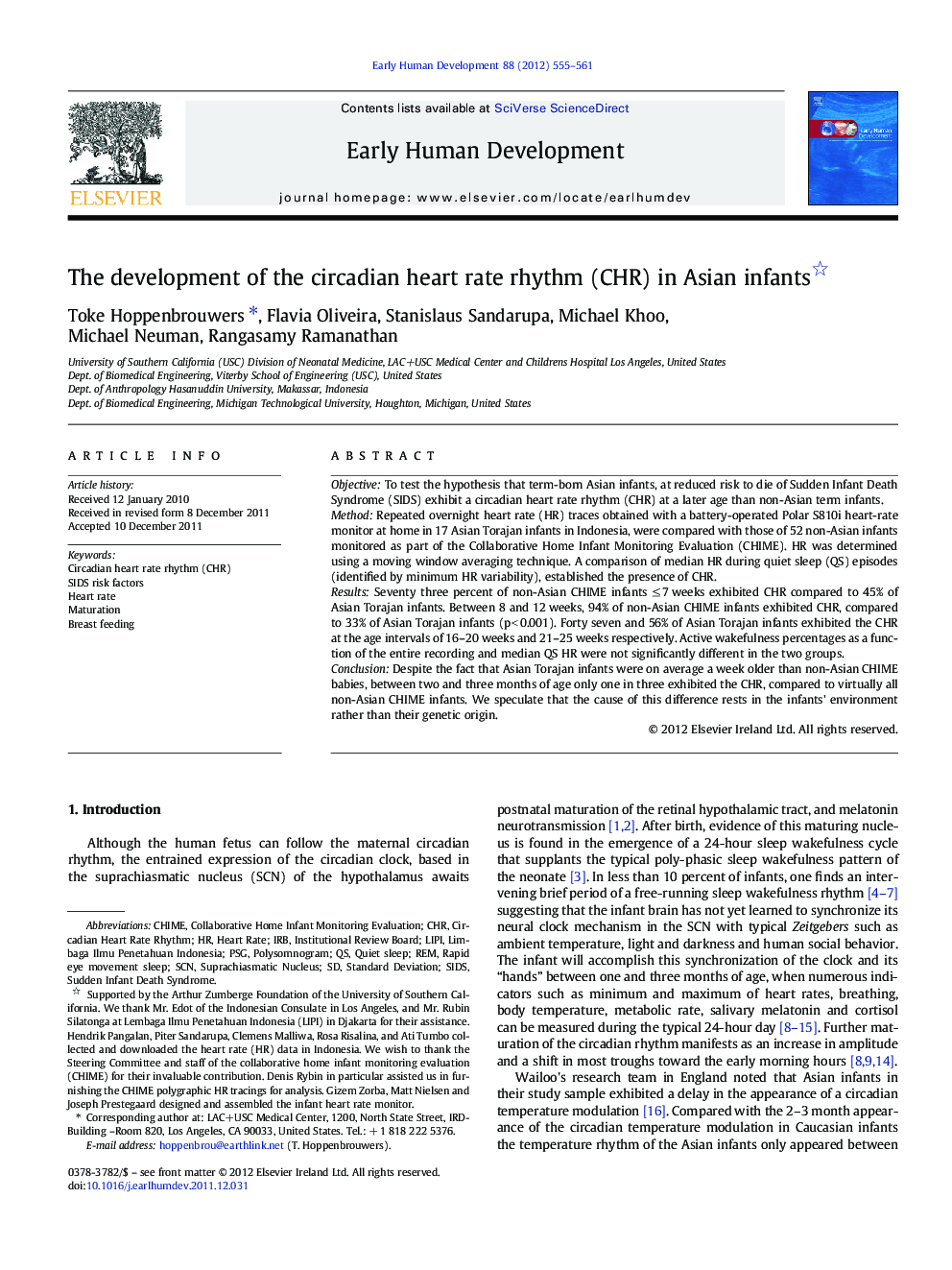| Article ID | Journal | Published Year | Pages | File Type |
|---|---|---|---|---|
| 6172133 | Early Human Development | 2012 | 7 Pages |
ObjectiveTo test the hypothesis that term-born Asian infants, at reduced risk to die of Sudden Infant Death Syndrome (SIDS) exhibit a circadian heart rate rhythm (CHR) at a later age than non-Asian term infants.MethodRepeated overnight heart rate (HR) traces obtained with a battery-operated Polar S810i heart-rate monitor at home in 17 Asian Torajan infants in Indonesia, were compared with those of 52 non-Asian infants monitored as part of the Collaborative Home Infant Monitoring Evaluation (CHIME). HR was determined using a moving window averaging technique. A comparison of median HR during quiet sleep (QS) episodes (identified by minimum HR variability), established the presence of CHR.ResultsSeventy three percent of non-Asian CHIME infants â¤Â 7 weeks exhibited CHR compared to 45% of Asian Torajan infants. Between 8 and 12 weeks, 94% of non-Asian CHIME infants exhibited CHR, compared to 33% of Asian Torajan infants (p < 0.001). Forty seven and 56% of Asian Torajan infants exhibited the CHR at the age intervals of 16-20 weeks and 21-25 weeks respectively. Active wakefulness percentages as a function of the entire recording and median QS HR were not significantly different in the two groups.ConclusionDespite the fact that Asian Torajan infants were on average a week older than non-Asian CHIME babies, between two and three months of age only one in three exhibited the CHR, compared to virtually all non-Asian CHIME infants. We speculate that the cause of this difference rests in the infants' environment rather than their genetic origin.
